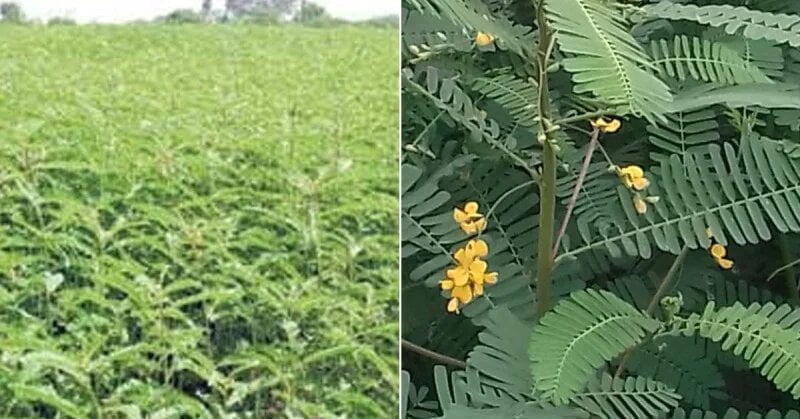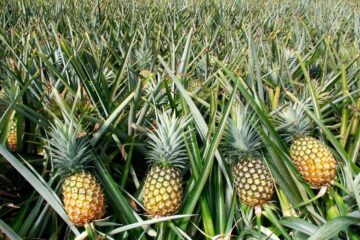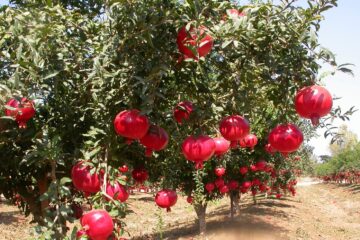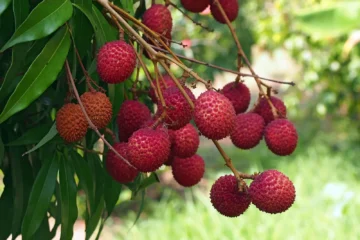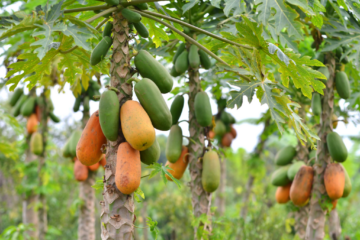Green manure crops are cultivated to enhance the organic matter content of the soil. By growing these crops, farmers can avoid unnecessary expenses and soil degradation caused by chemical fertilizers.
Green manure involves incorporating green, undecomposed material into the soil as fertilizer. This can be achieved by growing green manure crops or by using green leaves from trees and shrubs found in fallow lands, fields, or forest margins.
Types of Green Manure
Green manure typically involves planting legumes and plowing them into the soil once they have reached adequate growth. Common green manure crops include dhaincha, sesbania, sunn hemp, pillipesara (horse gram), and naripayir (cowpea).
Cultivation of Green Manure Crops
Green manure crops can be grown during the fallow period after the main crop harvest. These crops should not host pests and diseases of the primary crop and should be easy to cultivate with high seed yield potential. Tubers should be avoided. These crops should serve multiple purposes, such as feed, fodder, and fuel.
Cultivation Methods
- Dhaincha (Sesbania aculeata): Can be grown in all soils with irrigation facilities. The best time for seed production is March-April. For green manure production, 50 kg seeds per hectare are required. For seed production, 20 kg seeds per hectare are sufficient. Seeds should be treated with Rhizobium and sown at a spacing of 45×20 cm. Irrigation is required every 15-20 days. After 100 days, yields of 500-600 kg seeds and 25 tons of green manure per hectare can be achieved.
- Sesbania rostrata: Can be grown in all soils and seasons. The best time for seed production is March-April. For green manure, 30-40 kg seeds per hectare are needed. For seed production, 15 kg seeds per hectare are sufficient. Seeds should be treated with Rhizobium and sown at a spacing of 45×20 cm. Irrigation is necessary every 15-20 days. After 130 days, yields of 400-600 kg seeds and 15-18 tons of green manure per hectare can be achieved.
- Manila agathi (Sesbania grandiflora): Suitable for all seasons. Best seed production period is March-May. Thrives in red and black soils. For green manure, 40 kg seeds per hectare are required. For seed production, 7-8 kg seeds per hectare are sufficient. Seeds should be treated with concentrated sulfuric acid for 10 minutes, washed thoroughly, and treated with Rhizobium before sowing at a spacing of 45×20 cm. Irrigation every 15-20 days is needed. After 60 days, pinch off the tips to encourage branching. For seed production, harvest 3-4 times after 100 days, yielding 20 tons of green manure and 500-600 kg seeds per hectare.
- Sunn hemp (Crotalaria juncea): Can be grown in all seasons. The best time for seed production is March-April. Thrives in sandy and loamy soils. For green manure, 25-30 kg seeds per hectare are required. For seed production, 20 kg seeds per hectare are sufficient. Seeds should be treated with Rhizobium and sown at a spacing of 45×20 cm. Monthly irrigation is necessary. Harvest after 150 days for 13-15 tons of green manure and 400 kg seeds per hectare.
- Pillipesara (Horse gram): Suitable for all soils and seasons. The best time for seed production is March-April. Sandy soils are ideal for seed production. For green manure, 15-20 kg seeds per hectare are required. For seed production, 10 kg seeds per hectare are sufficient. Seeds should be treated with concentrated sulfuric acid for 30 minutes, washed thoroughly, and sown at a spacing of 30×10 cm. Monthly irrigation is needed. Harvest after 150 days for 6-7 tons of green manure and 400-500 kg seeds per hectare.
- Naripayir (Cowpea): Grows in all soils and seasons. The best time for seed production is March-April. Fallow paddy fields are suitable for seed production. For green manure, 10-15 kg seeds per hectare are needed. For seed production, 10 kg seeds per hectare are sufficient. Sown at a spacing of 30×10 cm. Irrigation every 25-30 days is necessary. Harvest after 150 days for 6-7 tons of green manure and 400-500 kg seeds per hectare.
Benefits of Green Manure
- Improves the physical and chemical properties of the soil.
- Stabilizes the organic matter content in the soil.
- Decomposes to provide nutrients for crops.
- Enhances soil structure and increases water retention.
- Breaks down hard soil, improving aeration and water drainage.
- Draws nutrients from the deeper soil layers to the surface.
- Green manure crops contain significant nutrients.
Nutrient Content of Green Manure Crops
- Dhaincha: 3.50% nitrogen, 0.60% phosphorus, 1.20% potassium.
- Manila agathi: 2.71% nitrogen, 0.53% phosphorus, 2.21% potassium.
- Sunn hemp: 2.30% nitrogen, 0.50% phosphorus, 1.80% potassium.
- Naripayir: 2.16-2.77% nitrogen, 0.48% phosphorus, 1.89% potassium.
- Pillipesara: 2.90-3.22% nitrogen, 0.39% phosphorus, 1.80% potassium.
Green Leaves for Manure
- Gliricidia: Introduced to India in the 1950s, it grows into a tree providing shade and is used as manure in tea and cocoa plantations. Planted in 1-2 meter rows or along field edges, it can be pruned for green manure without harming crops. Each tree provides 50-100 kg of green leaves.
- Pungam (Pongamia pinnata): Grows 4-5 meters tall, thrives in wetlands and along rivers and roadsides. Can be propagated by seedlings. Each tree yields 100-150 kg of green leaves annually.
- Kodipoo varasu (Gliricidia sepium): Rapidly grows with many branches, tolerant of drought, and yields significant green manure in a short period.
- Neem (Azadirachta indica): Thrives in all soils, along rivers, roadsides, and fallow lands. Each tree yields 150-200 kg of green leaves.
- Erukku (Calotropis procera): Contains 2.06% nitrogen, 0.54% phosphorus, and 0.31% potassium.
Challenges in Green Manure Cultivation
- Farmers may be reluctant to grow green manure crops for 6-8 weeks, causing loss of revenue.
- Difficulty in performing plowing tasks during hot weather in May and June.
- High cost and difficulty in obtaining quality seeds.
- Competition with the main crop if intercropped.
Benefits
- Improves soil structure.
- Increases water retention.
- Reduces soil erosion and weed growth.
- Helps in reclaiming saline soils.
Dr. K. Parameswari, Assistant Professor, Agricultural Science Center, Tindivanam, Villupuram District.

